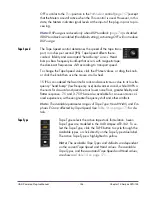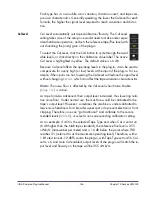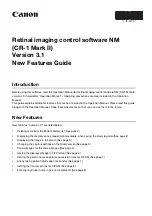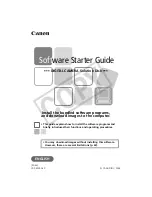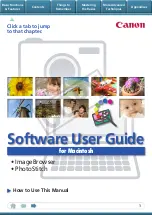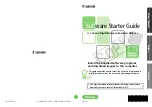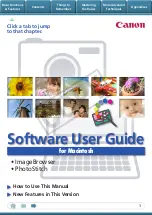
UAD Powered Plug-Ins Manual
- 150 -
Chapter 12: Ampex ATR-102
Low Level Tuning
Even though automatic calibration is available, the individual controls that ad-
just calibration are exposed for sonic manipulation. Playback EQ, record
(tape) EQ, and record bias can easily be altered for manual calibration
and/or creative purposes.
Manual
Calibration Tools
UAD Ampex ATR-102 includes the full suite of tools required to manually cal-
ibrate the recorder. Manual calibration tools are provided so expert users can
calibrate the system to their preferred methods for obtaining desired results.
The manual calibration tools consist of a tone generator (with multiple test
tones and levels), a distortion meter with digital readouts, and a full suite of
Magnetic Reference Laboratory (MRL) alignment tapes, which are used to cal-
ibrate playback electronics.
Mono/Stereo
Operation
While the UAD Ampex ATR-102 is a true stereo processor designed primarily
for use in stereo-in/stereo-out configurations, it will also operate in
mono-in/stereo-out and mono-in/mono-out modes.
When used in a mono-in/stereo-out configuration, the mono input signal is
sent to both channels of the processor, which can then be adjusted indepen-
dently. When used in a mono-in/mono-out configuration, adjusting any left or
right control will change both the left and right controls (the left/right controls
are always linked in mono mode).
Quick Setup
Set up the plug-in by first adjusting
Tape Speed
,
Tape Type
(tape formulation),
and
Emphasis EQ
, or simply select a factory preset. Note that as you lower
the tape speed, the tape “sound” becomes more audible. Once this basic
setup is made, adjust the L/R
Record
(gain) levels, for more or less tape/cir-
cuit coloration/saturation.
Artist Presets
UAD Ampex ATR-102 includes artist presets from prominent ATR-102 users.
Some of the artist presets are in the internal factory bank and are accessed
via the host application’s preset menu. Additional artist presets are copied to
disk by the UAD installer. The additional presets can be loaded using the Set-
tings menu in the
UAD Toolbar
(see
“Settings Menu” on page 88
).
Primary &
Secondary
Controls
The graphical interface panel has two modes; open and closed. In closed
mode, the primary controls (those that are typically most used) are available
on the main panel interface and the tape reels are visible. Additional (typi-
cally less used) controls are available on the secondary panel in open mode.
The secondary controls panel (
Figure 47 on page 159
) is accessed by click-
ing the OPEN button beneath the AMPEX label.




















